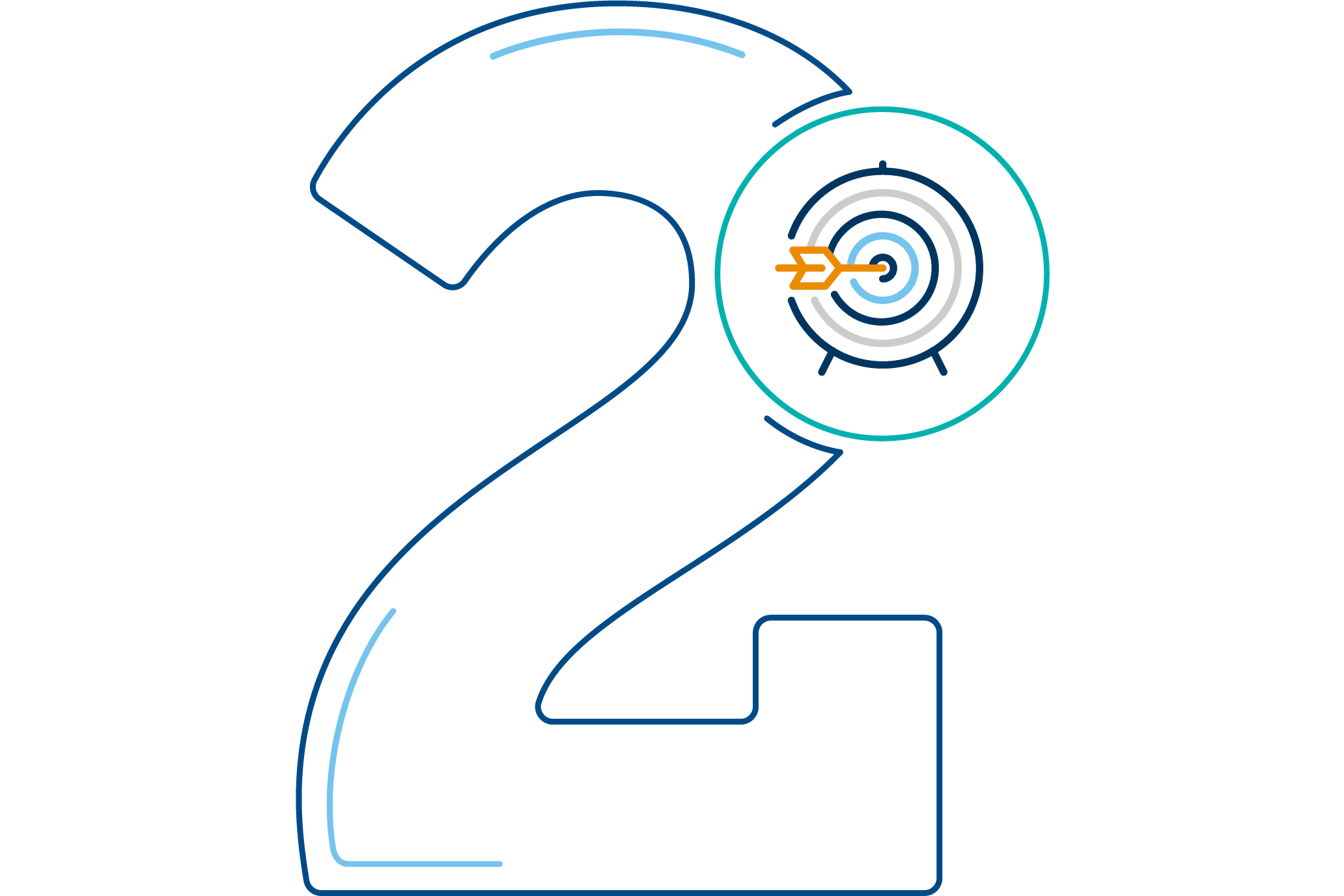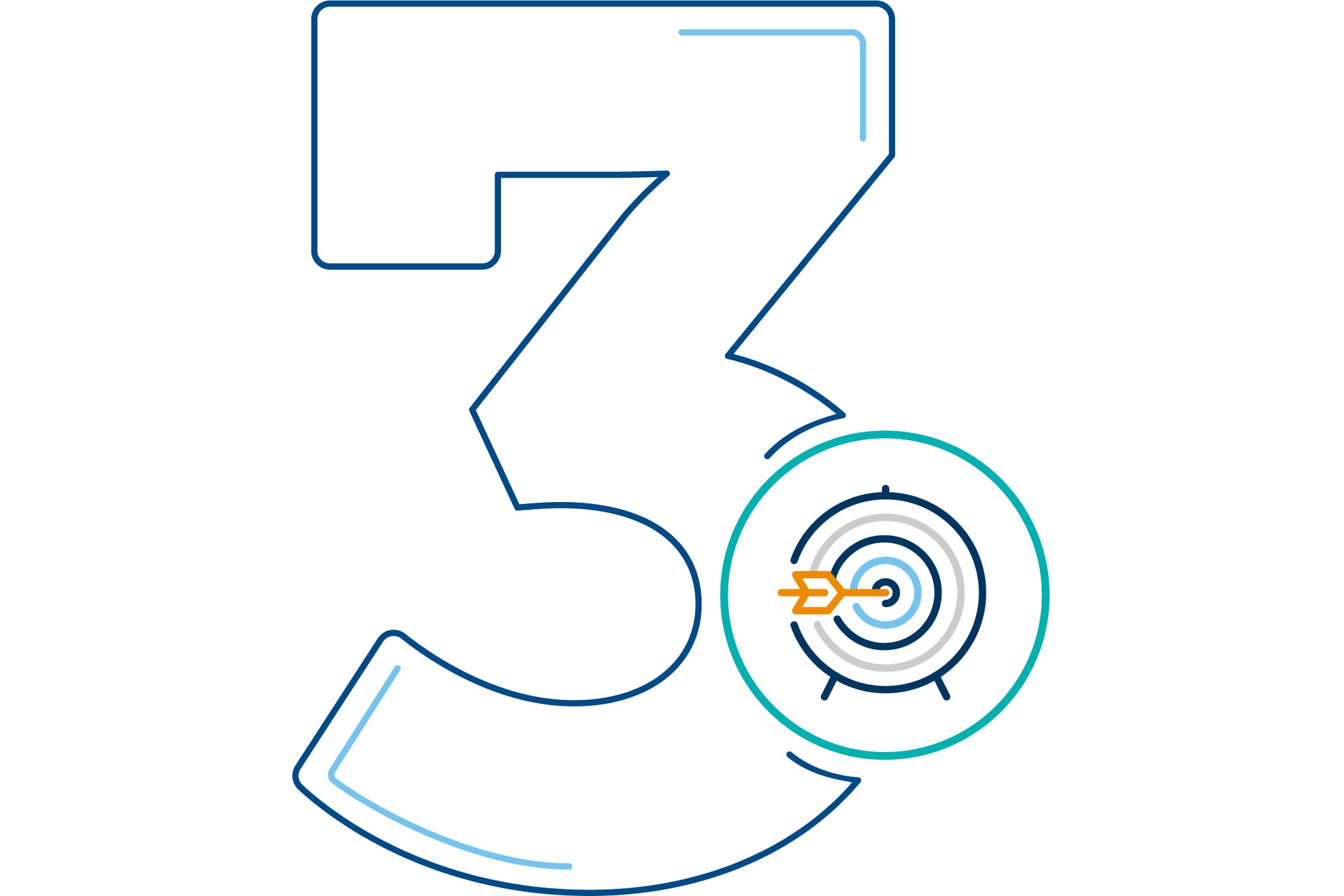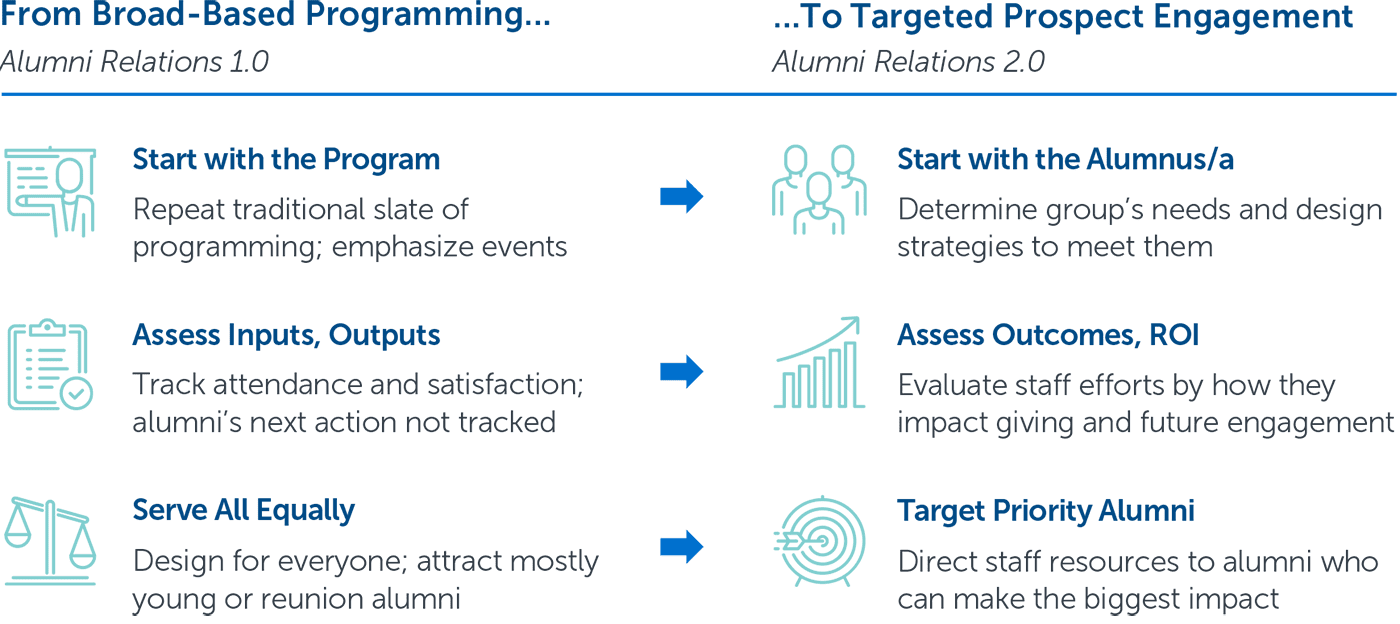Reimagine Constituent Engagement for the 21st Century
Thanks to the enrollment boom of recent years, alumni populations are at an all-time high. Amid this growth, advancement must solve an engagement quandary: with so many constituents to engage, how do we craft a strategy that resonates both broadly and deeply?

Break from the overreliance on in-person engagement

Key Elements to Active Digital Engagement
-
Well-defined ask
The engagement asks should be well-scoped and quick to complete. Constituents should be able to clearly understand what they are being asked to do, what the impact will be, and why it is important. -
Average time commitment of 30 minutes or less
The low time cost of digital micro-engagement opportunities makes them attractive to busy constituents who want to be connected but may lack the time to come to in-person events. -
Active engagement, rather than passive consumption of content
Rather than just reading a newsletter, Facebook post, or other piece of digital content, these opportunities should enable constituents to participate in a two-way, active dialogue that deepens their engagement with the institution. -
Shareable end product
Constituents’ contributions, be they songs in a shared alumni playlist, memories in a digital timeline, or anything else—should be shared with the community writ large so that everyone can see the impact of their engagement. -
Marketed and completed primarily on digital channels
Digital channels, like social media, should be the main avenue through which these micro-engagement opportunities are advertised to constituents. Additionally, constituents should be able to complete the ask online so participation in not hindered by location. -
Low cost, with broad reach
These micro-engagements should be inexpensive to execute, especially using tools like social media, but should appeal to and be accessible by a wide audience of constituents.
Rescope volunteer roles to meet Millennial needs
Higher education institutions have historically struggled to engage alumni in their 30s and 40s due to the three c’s: children, career, and commute. Compounding that problem, millennial volunteers and leaders of today bring new expectations of convenience, customization, and deployment of their expertise, rather than just their time.
Institutions must offer an attractive array of new involvement opportunities that meet the needs of this critical segment of constituents to build a strategic pipeline of high-potential leaders.

New Rules of Volunteer Engagement
-
Rule one
Shift to short-term, clearly scoped roles to make it easy to say yes
Prioritize high-potential prospects when crafting engagement offerings

Research Highlights
Some institutions have shifted to pipeline-focused alumni relations programming. Others have modified their engagement programming to achieve specific cultivation goals, hiring engagement officers to carry portfolios of high-potential mid-career alumni. A stronger, more communicative partnership between development and alumni relations ensures a more seamless flow of alumni intel to power prospect prioritization processes and better alignment of event strategy with development aims.

This resource requires EAB partnership access to view.
Access the roadmap
Learn how you can get access to this resource as well as hands-on support from our experts through Advancement Advisory Services.
Learn More